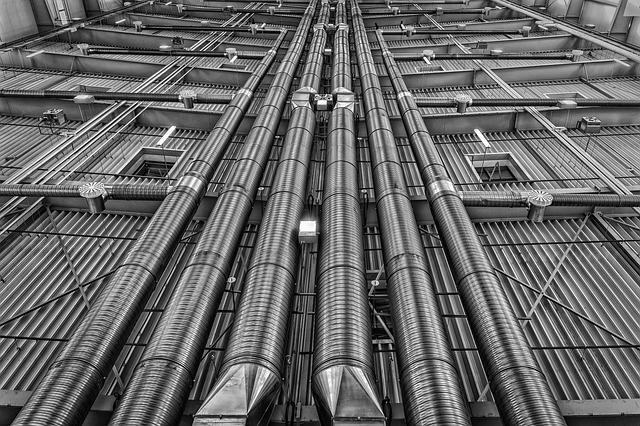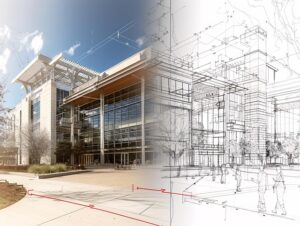Commercial unit heaters are vital for maintaining optimal temperatures in large spaces like warehouses, distribution centers, and retail areas. With flexible configurations (natural gas or electric) and strategic installation, they enhance energy efficiency through precise temperature control. Key factors influencing heat distribution include warehouse size, layout, heating system type, and operational needs. High-capacity systems and suspended installation methods ensure uniform warmth, while modern technologies like advanced heating elements and smart controls optimize performance and reduce costs. Warehouse operators have seen substantial savings and improved efficiency by adopting condensing unit heaters, with successful case studies highlighting their benefits in commercial settings.
In the world of warehouse management, efficient heating systems are paramount for maintaining optimal working conditions. This article explores the power of condensing commercial unit heaters in maximizing heat efficiency. We delve into their role as essential warehouse heating solutions, examining factors influencing heat distribution and offering strategies to enhance performance. By exploring modern technologies and successful case studies, we uncover how these heaters revolutionize warehouse environments, ensuring comfort and energy savings.
- Understanding Commercial Unit Heaters: Their Role in Warehouse Heating
- Factors Affecting Heat Efficiency in Warehouses
- Strategies to Optimize Heat Distribution for Maximum Efficiency
- Modern Technologies Enhancing Commercial Unit Heater Performance
- Case Studies: Successful Condensing Unit Heater Implementaion in Warehouses
Understanding Commercial Unit Heaters: Their Role in Warehouse Heating

Commercial unit heaters play a pivotal role in maintaining optimal temperatures within warehouses, distribution centers, and other commercial buildings. These specialized heating systems are designed to efficiently heat large, open spaces that often house extensive inventory or machinery, ensuring both operational comfort and energy conservation. With various configurations available, such as natural gas fired or electric heating models, unit heaters offer a flexible solution for diverse space heating needs.
In the realm of warehouse management, understanding the BTU capacity and efficient suspension installation of these devices is crucial. Commercial unit heaters can be strategically placed to create zones within a large facility, allowing for precise temperature control. Moreover, their integration with existing HVAC systems enhances overall energy efficiency, making them a game-changer in reducing operational costs for businesses, especially in retail spaces and office heating scenarios.
Factors Affecting Heat Efficiency in Warehouses

Several factors play a significant role in determining heat efficiency within warehouses, particularly when utilizing commercial unit heaters. One key consideration is the size and layout of the warehouse space; larger areas require more powerful heating systems to maintain optimal temperatures effectively. The type of heating system deployed is another critical aspect. Commercial buildings, whether equipped with natural gas fired or electric heating units, can experience varying energy efficiency based on factors like BTU capacity and HVAC system design.
Additionally, the specific use cases within warehouses impact heat retention and distribution. For instance, retail spaces that see frequent foot traffic may demand higher heating standards than offices or storage areas. The strategic placement of heaters and their suspended installation are essential for evenly distributing heat across the entire space, ensuring no cold spots remain. Energy-efficient solutions are increasingly sought after, as businesses strive to reduce operational costs while minimizing environmental impact through optimized space heating practices.
Strategies to Optimize Heat Distribution for Maximum Efficiency

Optimizing heat distribution is key to achieving maximum efficiency with commercial unit heaters in warehouses and other large spaces like retail spaces and office buildings. Strategically placing these heaters, especially when employing suspended installation methods, ensures uniform warmth across the entire area. Factors like ceiling height and space layout significantly impact heat transfer, so careful consideration is crucial. For instance, natural gas fired heaters or electric heating systems with higher BTU capacity can effectively heat larger volumes of air in commercial buildings, enhancing energy efficiency and reducing overall heating costs.
Integrating these strategies with the right HVAC systems allows for precise control over temperature and humidity levels. This not only ensures optimal space heating but also creates a more comfortable and productive environment. By focusing on efficient heat distribution, warehouse operators can make the most of their commercial unit heaters, leading to significant energy savings without compromising on indoor comfort during colder months.
Modern Technologies Enhancing Commercial Unit Heater Performance

Modern technologies are significantly enhancing the performance of commercial unit heaters, making them more energy-efficient and suitable for a wide range of applications in commercial buildings, from offices to retail spaces. Innovations such as advanced heating elements, smart temperature control systems, and enhanced insulation materials allow these heaters to deliver precise and efficient space heating, optimizing energy use and reducing operational costs.
For instance, natural gas fired unit heaters are becoming increasingly popular due to their high BTU capacity and environmental friendliness. Electric heating technologies, too, offer excellent energy efficiency and can be integrated into existing HVAC systems for seamless operation. Suspended installation methods ensure optimal air circulation, enhancing overall comfort in large warehouse or commercial spaces. These advancements not only improve the effectiveness of commercial unit heaters but also contribute to a more sustainable and cost-effective office heating solution.
Case Studies: Successful Condensing Unit Heater Implementaion in Warehouses

In recent years, numerous warehouse operators have witnessed significant energy savings and improved heat efficiency by implementing condensing unit heaters. These advanced heating solutions are designed to extract heat from exhaust gases, condensing water vapor to release concentrated thermal energy. This process not only boosts overall heating effectiveness but also reduces carbon emissions and operating costs.
Successful case studies highlight the benefits of condensing unit heaters in various commercial settings. For instance, a leading e-commerce warehouse in North America saw a 30% reduction in space heating bills after retrofitting their HVAC systems with energy-efficient models. Similarly, a retail logistics center in Europe achieved a remarkable 25% increase in BTU capacity while transitioning from traditional electric heating to natural gas fired condensing heaters, enabling them to maintain optimal indoor temperatures year-round for their vast, bustling spaces. These real-world applications demonstrate the potential of condensing unit heaters to revolutionize office heating and space heating in commercial buildings, contributing to a greener future.
Commercial unit heaters play a pivotal role in maintaining optimal warehouse temperatures, and by understanding their functionality and implementing efficient strategies, significant heat savings can be achieved. Factors like smart placement, regular maintenance, and advanced technologies such as condensing units significantly enhance overall heating performance. Case studies demonstrate that modern solutions like these not only optimize heat distribution but also lead to substantial energy cost reductions. Adopting these practices ensures warehouses operate at peak efficiency, contributing to a more sustainable and cost-effective working environment.






